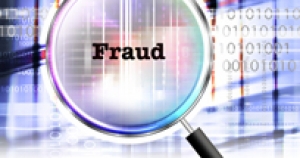عرض العناصر حسب علامة : البيانات المالية
كيفية اختيار برنامج المحاسبة المناسب لعملك
ربما تفكر في شراء برنامج محاسبة لأول مرة او تفكر في تبديل البرنامج الذي تستخدمه حالياَ في مرحلة ما، قد تتساءل عن كيفية اختيار برنامج المحاسبة المناسب هناك العديد من الخيارات المتاحة امامك ولكن قد تشعر انك لا تعلم اي منها المناسب لك.
معلومات إضافية
-
المحتوى بالإنجليزية
Maybe you’re thinking about buying accounting software for the first time. Or, you’re finally ready to switch software providers. At some point, you may wonder how to choose accounting software. There are so many options out there that even knowing where to get started selecting the right accounting software can feel impossible. This article will help you learn how to choose accounting software that fits your needs.
How to choose the right accounting software for your business
How to choose the right accounting software for your small business can make your head spin. Your company has specific needs. And with so many software features, price points, commitment timelines (one-time charge or subscription), and everything else, it can be tough to keep things straight.
To sort through your options, consider the following five tips.
1. Choose accounting software that fits your budget
Before you get started, you should know the cost of accounting software varies. The amount often increases with the number of features the software provides. Want more features? You may have to shell out some more money.
It’s important to understand how the price compares to available features when choosing accounting software. The last thing you want is overpriced software with a bunch of features you’ll never use. Check and see if the software offers a free trial or self-guided demo before purchasing. If they do, you’ll get to know the software’s features before you commit.
Watch out for how you are charged for the software. Software companies often have different methods for charging users. Some software applications are sold at a large, one-time fee. Depending on the software, you might have to pay additional expenses for updates when they come up. If this is the case, you won’t be able to plan ahead of time for the new fee. If the update is needed, you’ll need to pay for it.
Other software programs work on a monthly or yearly subscription. They are often sold in packages with a tiered pricing structure that allows you to choose exactly what you need. If you choose software that charges a monthly fee, know the terms before subscribing.
Make sure that you understand your contract—is it flexible or iron-clad? If you break a contract, you could be charged a fee.
Last but not least: watch out for the hidden or additional fees. You don’t want to be surprised by extra charges for creating invoices, running reports, providing setup, customer service, and data storage.
2. The best accounting software is the one you know how to use
If you’re like many small business owners, you have a depth of knowledge in your specific field, not accounting. You don’t want to spend your workweek learning bookkeeping.
Sure, you might not technically be a bookkeeper, but you aren’t new to money management. You’ve been managing your finances ever since you first debated whether or not you should break your piggy bank or fill it up some more.
With that being said, accounting software comes with all different types of skill levels in mind. Some are simple and made for the nonaccountant. Others are more suited for accountants. In the end, it doesn’t matter who you are. You should look for software that offers free resources and customer support. That way, if you do need to learn something new, there’s an easy way to make sure you have the right information.
3. Decide the features you need for accounting software
The good thing about having so many features to choose from is that you get to find the accounting software that fits your needs like a glove.
Here are some common features you might come across:
Create and track invoices
Pay vendors
Compile financial statements
Process credit cards
Integrate with bank accounts
Record customer histories
We all love a good checklist. To help organize your search, make a checklist of all the features you need. Prioritize the list from the most necessary features to the least.
Find a software solution that supports both current needs and future needs. Find software that can grow with your business.
4. On-the-go owners must look for flexibility
If you find yourself loosely defining the word “office” to include cafes, airport lounges, and your favorite restaurant, you may want to look into cloud-based accounting software.
Cloud-based software stores information online so you can access the program anywhere with any device connected to the internet. There are a lot of upsides here: You aren’t tethered to a desk, and you don’t have to worry about losing accounting information if your computer crashes on you.
If you do choose desktop software, you should know the risks. That single computer and its hard drive become the center point of your workweek. And, the software is only available to you if your computer is in tip-top shape. Crashes, water damage, and power outages can wreak havoc on your accounting records.
5. Make sure that quality customer support is there when you need it
You may have questions or need help understanding your new software. And when that time comes, you’ll want a support team that can help quickly and easily. Quality customer support that is knowledgable and easy to get a hold of will be key to switching over to new software.
Here are some questions to keep in mind when thinking about customer support:
Is the support free, or are there additional, even recurring fees?
What time zone are they in? Make sure you don’t lose too much time between different time zones.
Is the support team experienced and knowledgeable about the software and your needs?
Is there more than one way to get ahold of customer support (e.g., phone, email, online chat)?
How to choose accounting software
The items listed above are just a starting point. You also need to consider the following:
Reports: Look for easy-to-read reports that are shareable with your accountant, managers, or other trusted employees.
Accounting method: Choose accounting software that matches your preferred accounting method.
Security: Make sure that the software has your security interests in mind.
Commitment: Choose month-to-month or annual commitments (whichever fits your needs).
Reviews: Trust customers who’ve been using the software for weeks, months, and even years—let them tell you just how good the software is.
رسالة دكتوراه: العلاقة بين إستخدام تقنية البيانات الضخمة والأداء المالي للشركات في إطار التأثير المعدل لجودة نظام المعلومات المحاسبي
استهدف البحث دراسة العلاقة بين أستخدام تقنية البيانات الضخمة ومستوى الاداء المالى للشرکات فى ظل التأثير المعدل لجودة نظام المعلومات المحاسبى على تلک العلاقة ومن اجل تحقيق هدف البحث والاجابة عن تساؤلاتة واختبار الفروض ,قامت الباحثة بإجراء سرد للدرسات السابقة في هذ المجال في محاولة الوصول إلى الفجوة البحثية واشتقاق فروض الدراسة.
ندوة عبر الويب بعنوان سلسلة قيمة إدارة البيانات: فرصة للمحاسبين في العصر الرقمي
معلومات إضافية
- البلد عالمي
- نوع الفعالية مجانا
- بداية الفعالية الإثنين, 18 أبريل 2022
- نهاية الفعالية الإثنين, 18 أبريل 2022
- التخصص محاسبة ومراجعة
- مكان الفعالية اونلاين
ما هو الأمن السيبراني المحاسبي
معلومات إضافية
-
المحتوى بالإنجليزية
Accounting cybersecurity is a growing issue. Financial data, in particular, is a prime target for hackers and data theft efforts, making this a nightmare for accounting professionals and businesses alike. As a result, IT teams and accountants must consider how to keep precious data secure.
In this article, we look at how accountants can structure an accounting cybersecurity strategy to keep financial data secure. Above all, we discuss tips to keep financial data secure and champion dual cyber security and accounting best practices throughout your organization. Also, we examine cloud-based accounting software features that keep data safe and secure.
cybersecurity blog accounting seed
Why Accounting Cybersecurity Needs To Be Top-Of-Mind
While the cloud has made accounting easier to access and manage, it’s also opened up many more threats than conventional paper-pen bookwork. To clarify, even robust IT infrastructures can be targeted and penetrated by hackers and cybercriminals. But, what’s even more disheartening and dangerous is that internal accounting data threats are even more costly.
Some think that cyber security and data security are not linked to the accounting life cycle. This isn’t true. For example, besides hacking, financial data threats can include errors and unintentional data breach that necessitates sophisticated solutions to safeguard data. Accountants and accounting firms know that financial data breaches threaten livelihood, business growth, customer relations, and more. Similarly, the same account details you use to track debits and credits are vulnerable to malware and malicious activity.
Stolen accounting data can include:
Account numbers
Transaction details
Credit card numbers
Bank accounts
Usernames
Passwords
Personal and private information
Most importantly, the biggest danger is assuming that ‘my accounting firm’ or ‘my company’s financial data’ isn’t threatened. Data breaches in the financial services industry, and in general, are on the rise.
The State Of Accounting Cybersecurity Attacks 2021
2020 saw a major shift to remote workstyles due to the COVID-19 pandemic, but an equal plague is the rise of cyberattacks. For instance, this year the total number of data breaches surpassed 2020 by 17%. In fact, 1,291 breaches occurred in 2021, compared to 1,108 in 2020. This increase shows a significant rise in cyber attacks that have grown more sophisticated with the rise in cybersecurity measures.
How does one account for the cost of these data breaches? First, here’s a snapshot of the years leading up to 2020:
cybersecurity blog accounting seed
Currently, the average cost of data breach for companies is $4.24M, the highest in 17 years. For businesses and accounting firms alike, the mere risk of such a loss is extreme. More importantly, a companies’ reputation can also face immense backlash, even resulting in it having to close. These stories are not rare by any means.
Examples Of Accounting Cybersecurity Breaches
Sequoia Capital (2021)
Financial institutions like Sequoia Capital are often the targets of criminals seeking to hack financial data. This example was not as severe as it could have been, only one employee’s email was successfully hacked through a “wire diversion scam.”In fact, just one data breach can jeopardize customer and business financial data resulting in significant financial loss. Even more, Sequoia had to deal with informing customers and potential investors.
Capital One Data Breach (2019)
This is a prime example of how unguarded internal accounting processes can cause major damage to a company. One of Capital One’s own employees illegally accessed one of the Amazon Web Servers storing vital data and stole 100 million credit card applications. As a result, approximately 140,000 social security numbers were leaked, as well as 80,000 bank account numbers.
What About Small Business Data Breach?
You may think criminals only want to hack the financial data of enterprise size or large businesses? Not true. Small to medium-sized businesses are prime targets too, only the consequences can be more devastating. According to an Inc. article, 60% of small businesses fail within six months of a cyber attack.
Even if a business doesn’t close, the costs of a data breach can be immense. For example, an Oregon-based accounting firm, Gustafson & Co, experienced a massive data breach and was forced to pay $50K after 1,900 individuals were exposed.
Cyber Security For Accounting Firms: 6 Essential Practices
There are risks to your financial data both outside of and inside of your organization. Subsequently, it’s not hard to take control and get ahead of these threats. Preventing or at least mitigating data breaches starts with putting the proper protections in place. There is already evidence that with increased awareness of cybercrime and increased security investment, companies can protect themselves effectively. But, this comes with a dual focus on safe practices and technology. Start doing these financial security steps right now!
1. Know Your Threats
As an accountant, you face threats like hacking, ransomware, and phishing scams, but internal threats and errors are just as compromising. Accidental data sharing can occur easily with untrained staff, and there are multiple ways data relevant to the financial lifecycle can be misplaced. It’s critical to analyze how your individual organization handles data and create accountability into your actual accounting practices for proper data management.
2. Train Your Staff
As the accounting profession becomes more intertwined with IT and cloud accounting, protecting financial data will take precedent. Instilling a sense of ownership in financial data is a vital necessity. For instance, do this by educating your team on the growing threats and risks of a financial data breach and how to prevent ransomware attacks. In the same vein, accounting system security is critical not only for your accounting firm and your reputation but also for your customers. Accounting Seed values accounting security so much, we make it our mission to provide resources to help accountants and businesses protect their data. Check out our free guide and webinar.
3. Know Your Regulations
Some of your security threats may be covered within business, state, and federal regulations you must follow. This is especially the case if your accounting firm contracts with the federal government. These regulations protect you, your customers, and ensure proper accounting standards. Document these requirements and incorporate them into your reporting and accounting standards.
4. Design An Approval And Validation System
Your most trusted and experienced managers and approvers must take ownership. Establish which actions and data need to be looked over and approved by higher-level managers. Besides ensuring the most experienced and trustworthy staff members have the final authority on using data, this also helps protect your accounting firm from potential errors. Remember, accidental data sharing is common, and about 80% of data breaches are caused by internal human errors. Constructing an approval and validation system helps ensure no mistakes are made that would jeopardize your data.
5. Establish Security Requirements
Work with your team to identify risk factors to create a comprehensive financial security requirements list. Besides taking in specific accounting practices and regulations, examine your unique process to see where data slips may occur. As you collaborate, internal controls should be considered too. These play a big role in defining additional functionality you need from an accounting system.
6. Choose The Right Accounting System
The most critical step in accounting cybersecurity is choosing the right accounting system. The best plans and established financial security requirements mean nothing if you can’t implement them. Or, if you’re forced to implement these protections manually. The reality is that basic accounting security features like usernames and passwords aren’t enough anymore. To secure your accounting system against current cyber threats and ransomware attacks, you need a flexible system that has both strong encryption and automated internal security functions.
Keep Financial Data Secure With Reliable Accounting Software
Besides helping your accounting firm manage and analyze finances more efficiently and effectively, one of the core uses of accounting software is protecting your financial data. Remember, you’re not just protecting your firm, you’re protecting the identities and data of your clients. Investing in a secure accounting platform isn’t just necessary, it is a vital step to ensuring your company’s sustainability. Not to mention, your customers’ safety and well-being. But what constitutes a secure accounting system?
Three Core Areas Financial Data Security Features:
1. Natural Event Protection
Securing data through the cloud and with backups to ensure natural disasters and physical destruction or malfunction does not expose or lose data. The cloud has helped eliminate a lot of these threats, so make sure your financial data can be stored on the cloud and accessed virtually.
2. External Threat Protection
This refers to protection from hackers trying to hack financial data – your first line of defense. Strong, secure Application Programming Interface (API) is important to ensure the safety of your financial data as you connect it with other applications. Encryption and overall robust IT infrastructure is also critical to keeping hackers out.
3. Internal Threat Protection
This is your second, more intensive layer of defense which protects you from both external and internal intrusions. If an external threat breaks past firewalls or encryptions, they then have to contend with passwords, permissions, and user hierarchy. Things like passwords and usernames are pretty standard protections across various products, but they’re not enough. More in-depth features are needed to create an extra barrier against cyberthreats while also protecting your accounting data against potential internal errors or malicious activity.
Here Are Some Core Features To Look For:
Two-Factor Authentication
Two-factor authentication lets you enable a second level of authentication for every login. You can also implement a two-factor authentication when a user is performing a specific function like examining billing reports or approving expenses.
User Permissions
User permissions let you clearly define what tasks users can perform, approve, and have access to.
Approvals
You can automate specific steps or sequences of events that require an official signoff on a record to ensure accuracy. The signoff can be linked to the desired authority to ensure data is accurate and secure, and that the current process is proceeding correctly.
User Role Hierarchy
Establishing a user hierarchy lets you dictate which specific user(s) can view or change specific components of accounts or records within the system, like reports. Roles determine user access to opportunities, cases, and contacts.
Validation Rules
Validation rules establish standards for recording and handling data. These security measures also ensure that only select users can do a certain process in the system. Based on business logic, validation rules can be set to prevent processes from being completed out of sequence.
Real-Time Event Monitoring
Real-time event monitoring helps you keep track of and monitor standard events in near real-time.
Audit Trail Functionality
Audit trail lets you track changes throughout the financial reconciliation process to maintain accurate, up-to-date information. This also lets you see exactly who is doing what in the general ledger, with project accounting, and every other aspect of the accounting process.
Object/Field Trail Functionality
Object/field trail functionality lets users view and document changes done to an object or a specific record within the object.
Workflow Rules
Workflow rules let you create and automate internal processes and procedural steps in orchestrating key accounting functions. This dictates how data is logged, accessed, processed, and used.
Secure Email Functions
Encrypt and safely send sensitive emails with accounting data involved. In Accounting Seed, you can utilize page layouts and Salesforce permissions to restrict users from viewing attachments too.
LEARN ABOUT ALL THINGS ACCOUNTING CYBERSECURITY IN OUR FREE GUIDE.
Protect Your Accounting Data Right Now With Accounting Seed
Accounting Seed has all the security features you need to fully protect your accounting data from any threats you face on the cloud. Our flexibility also lets you tailor these security features however best suits your individual needs. Keep your accounting data secure and you keep your organization and customers safe too, not to mention happy.
At Accounting Seed we’re focused on removing security concerns to give you the peace of mind to use your accounting data effectively for your organization. Schedule a free demo today to see how our solution protects your data from all the threats of tomorrow, and beyond.
5 خطوات لمنع الاحتيال
بينما لا أحد يريد تصديق حدوث الاحتيال في مؤسسته، لسوء الحظ، يمكن أن يحدث هذا بالفعل. عادةً ما يكون الاحتيال جريمة، مما يعني أن وضع تدابير وقائية للاحتيال يمكن أن يساعدك في تقليل الاحتيال قبل أن يبدأ.
معلومات إضافية
-
المحتوى بالإنجليزية
5 steps to prevent fraud
By Brandy Keller
October 26, 2021 3:00 PM
Facebook
Twitter
LinkedIn
Email
Show more sharing options
While no one wants to believe fraud is occurring at their organization or nonprofit, unfortunately, it can and does happen. Typically, fraud is a crime of opportunity, which means that putting preventative fraud measures in place can help you reduce fraud before it starts.
Here are five steps you can put in place no matter what size your organization is to decrease your risk of fraud. Remember, when you have formal reporting mechanisms in place for fraud, you are setting the foundation of fraud reduction.
Whistleblower policy
fraud-detect.jpg
Sean Gladwell/Getty Images/Hemera
Create a clear fraud whistleblower policy for your organization and its employees. Make sure this fraud policy is part of employee onboarding, and part of your employee handbook. Conduct background checks during the hiring process. Post the fraud policy in your office as well as on your internal website. Establish different ways any employee can report fraud, including a tip hotline, anonymous email and an internal fraud website reporting link.
Note: Make sure your whistleblower policy includes a no-retaliation clause, a reporting procedure and confidentiality protection for the whistleblower. For a sample whistleblower policy for nonprofits, see these resources from the Council of Nonprofits.
Tips
Encourage employees to submit a tip or concern of fraud at any time and make sure they can do so via email, phone or in an anonymous tip box onsite. Help employees understand that they are part of the fraud protection team.
Note: The latest Report to the Nations from the Association of Certified Fraud Examiners found 43% of occupational fraud was reported through tips.
Internal controls
Ensure that you have internal controls to protect the security of your data, assets and any proprietary information in place, and that you update them on a regular schedule.
One of the most important controls you can implement is the segregation of transactions. Fraud is more difficult to pull off if you need to get multiple people involved. Typically, fraud is only perpetrated by one person alone, so if you have more people involved, the more you can deter fraud.
Don’t have a single employee handling the entire cash processing cycle. By assigning more than one staff member or employee to handle the processing and accounting for cash from beginning to end, organizations can lessen the opportunity for fraud. These multiple staff processing systems provide a benefit not only in fraud reduction but also in the security of the cash received and proper reconciliation for the donations.
Organizations should also avoid a single employee having sole responsibility over reconciling cash or asset activities. Putting checks and balances in place for any transactions processed will reduce the opportunity for fraud. Using a fund accounting software solution can help you to have internal controls in place that will flag entries or variances of a budget that would be otherwise undetected.
Keep in mind as well that fraud can be as simple as one employee printing out duplicate checks, or forging signatures on checks, so you want to keep all company checks locked up. Many companies also employ a two-signature check system so any check larger than $500 must be signed by two different people on the financial team.
Make sure you have your organization’s financial tasks segregated when it comes to processing cash and checks or reconciling cash, checks and payments. It is much easier to cover up fraudulent activities if the person committing the fraud is the only person with access to the full accounting system.
Fraud can be committed at any level of the organization so it’s important that all internal controls for fraud apply to every role at your organization.
Note: Internal accounting controls might include user role restrictions, protected access to proprietary asset information or funds, and alerts for budget variances.
Audits
Make sure you’re not waiting for a yearly audit to detect any fraud that might be occurring. While fraud is sometimes detected through an audit, don’t depend on or wait for a yearly audit to find fraud.
Note: Financial statement fraud is one kind of fraud that can occur. This includes net worth overstatements or understatements, misstating or overstating assets, false revenues or understated revenues, as well as improper disclosures. These are items an auditor will be looking for throughout an audit.
Internal fraud assessments
Build internal fraud assessments into your yearly organizational calendar, and make sure your managers and employees know your company conducts fraud assessments regularly.
Just as you do yearly reporting to your stakeholders, think about conducting yearly fraud awareness training. Research shows that more tips on fraud come through organizations that have standard fraud awareness training in place, in addition to a fraud policy.
If fraud is committed at your organization, once it’s resolved, use the opportunity to discuss how the fraud occurred, what was lost and how it happened as part of your fraud awareness training. When you have fraud awareness training, the more you can use real-world specific fraud events that correlate with your type of organization or nonprofit, the easier it will be for everyone to understand how to detect fraud.





